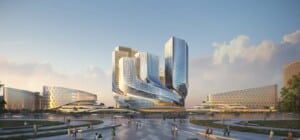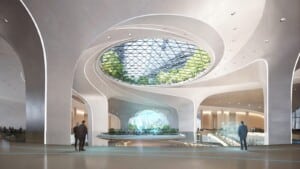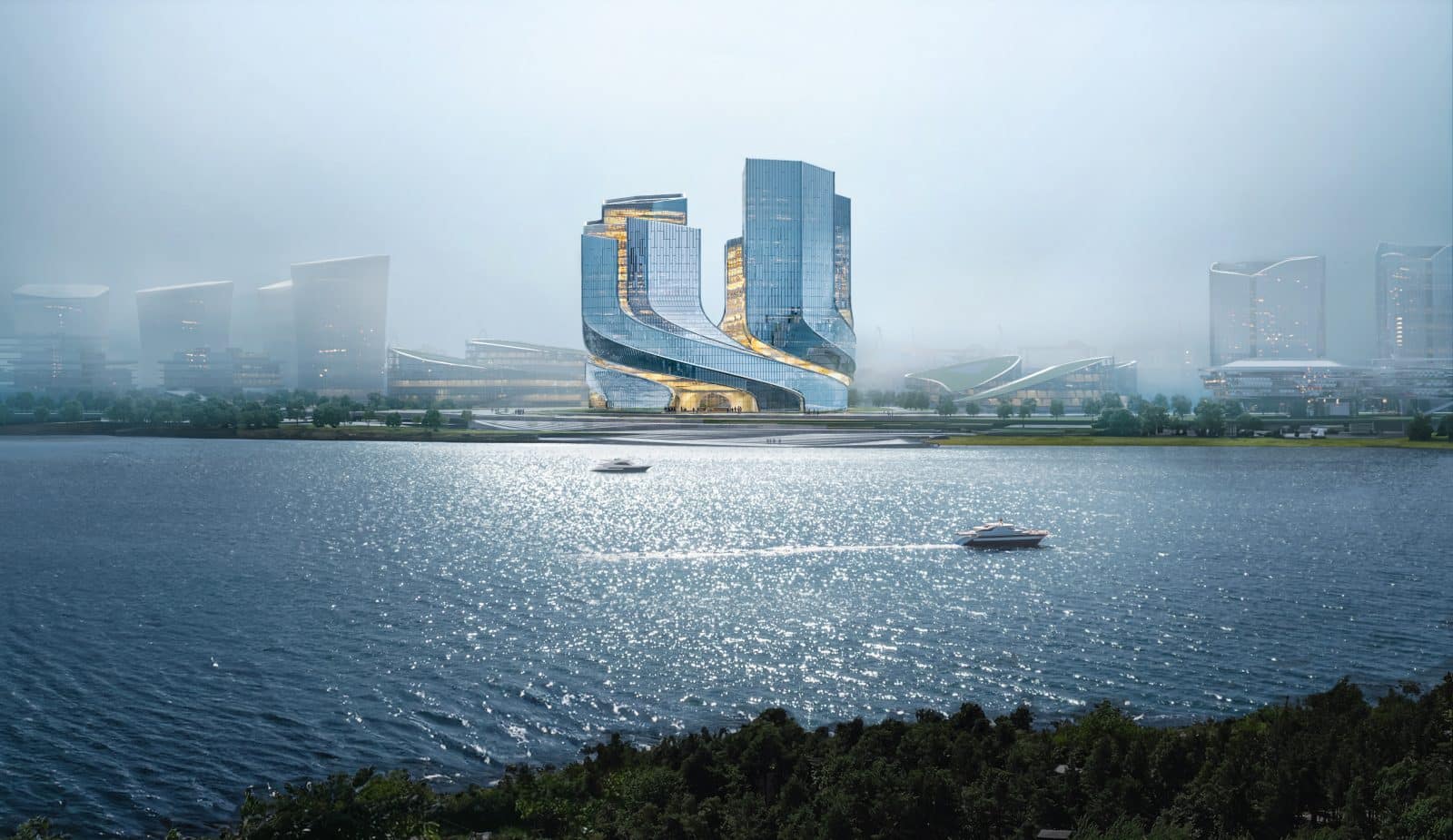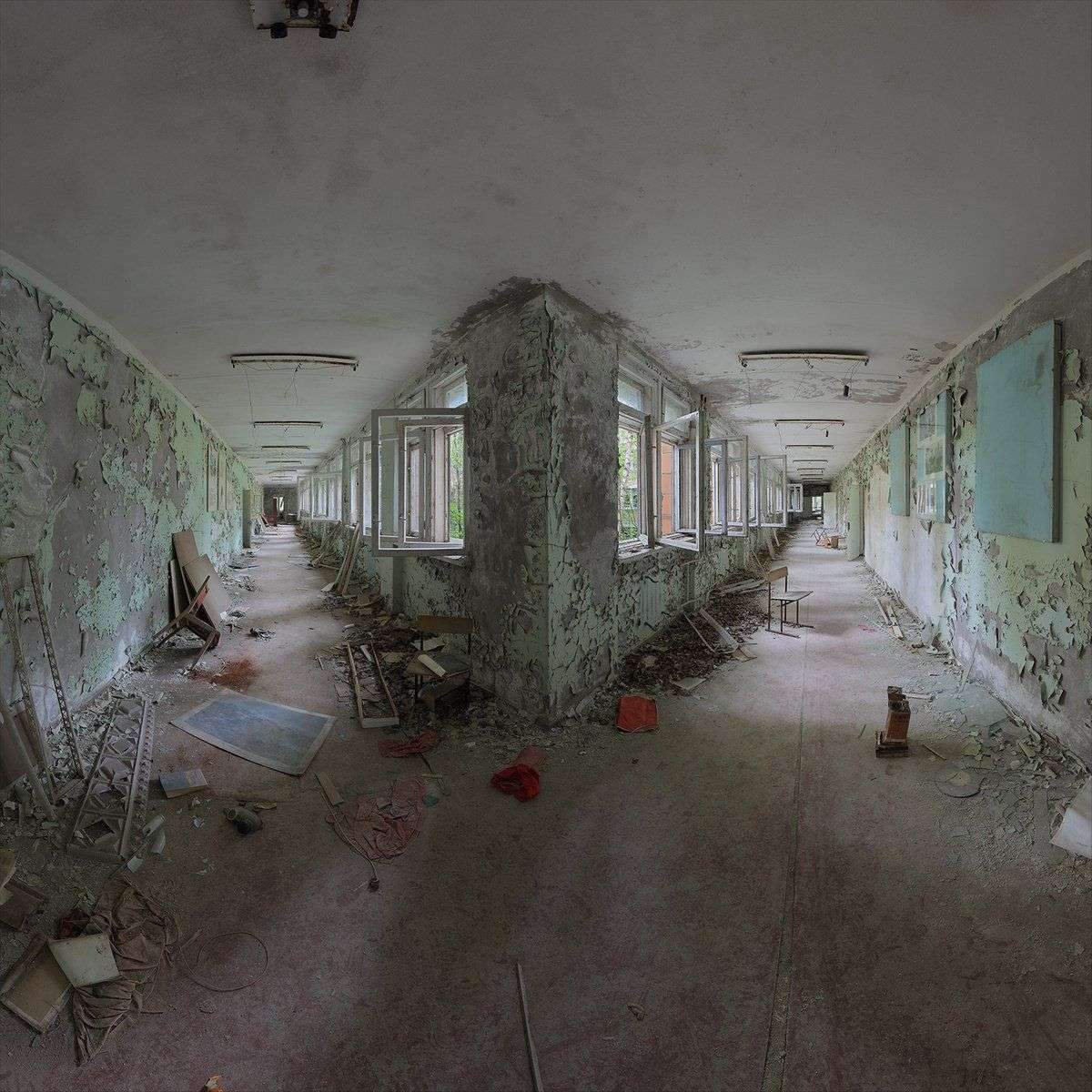Büro Ole Scheeren Wins Major Contest for Tencent’s New HQ, Raising Questions of Design Originality
Büro Ole Scheeren has emerged victorious in a significant competition to design the new headquarters for Tencent in Shenzhen, China. The firm was selected over a shortlist of prominent UK firms, including Heatherwick Studio, Zaha Hadid Architects, and Foster + Partners. Other renowned practices such as Herzog & de Meuron, Bjarke Ingels Group (BIG), Snøhetta, OMA, and Kengo Kuma were also surpassed in the race to design the Chinese multinational tech conglomerate’s new headquarters, which will house 23,000 of Tencent’s employees.
The internationally acclaimed architecture firm, founded by German architect Ole Scheeren, is known for designing the CCTV Headquarters in Beijing while at OMA. The firm has offices in Hong Kong, Berlin, Beijing, London, New York, and Bangkok.

Their proposed design for Tencent’s campus, known for creating the WeChat app, features a swirling structure formed of four office towers with a network of pedestrian pathways around it. This new Tencent campus is set to be nearly twice the size of Apple’s California HQ, Apple Park.
Central to the HQ will be the Vortex Incubator, a dynamic space linking the four towers and including Tencent’s academy, recreational spaces, a health club, a conference center, and collaborative offices. The design connects the central area with spiraling rays to the grand lobby and Urban Forum below, a public space with a mix of restaurants, retail, public amenities, and cultural space, integrating the HQ into its surroundings.

The facade will be constructed from modular prismatic panels, and the designers emphasize the orientation for maximum natural daylighting across all office floors, along with natural ventilation.
Büro Ole Scheeren describes the spiraling design of the proposed HQ, named Tencent Helix, as symbolizing the company’s rapid growth and representing an iconic new piece of architecture that redefines Shenzhen’s skyline. The firm states that its design for the tech giant’s new 500,000m² campus is both a cohesive, singular whole and a collection of distinct elements that unify the existing masterplan of the futuristic neighborhood on Dachanwan island.

Tencent, one of the world’s most valuable publicly-traded companies, reportedly set an ambitious brief for its new HQ to be part of a new 14ha urban development, akin in size to Midtown Manhattan, in the burgeoning tech and finance district of Qianhai Bay.
Ole Scheeren commented, “Tencent has a vision for the role of technology as a multi-dimensional system of sustainable values for society. Our design for the new headquarters reflects the same values, converging technology with the needs of people and society in a multi-dimensional construct of space and social integration.” He added that the building’s “well-structured social ecosystem” is a testament to the evolving nature of global headquarters into a complex and interactive ensemble where functionality, sustainability, and community come together.

Controversy Over Design Similarity with Ibrahim Joharji’s Yin Yang Old Hanglas Project
Interestingly, some discussions on social media have pointed out similarities between Büro Ole Scheeren’s winning design and the Yin Yang Old Hanglas project by renowned Saudi architect Ibrahim Joharji, designed two years prior. Joharji’s project features unique characteristics such as botanical gardens, baywalk areas, recreational parks, multi-purpose areas, and a mega-structure providing housing, commercial, and mixed-use spaces. The design was inspired by the flag of South Korea and aimed to achieve a balance in the overall design, reminiscent of the Yin and Yang concept.
This comparison raises questions about the evolution of architectural ideas and their influence across cultures and geographical boundaries. While both projects exhibit a commitment to innovation and sustainability, they also showcase the global nature of architectural inspiration, where ideas can transcend borders and inspire work in different regions of the world.
https://injarch.com/featured_item/yin-yang-old-hanglas/
The similarity in design could also be indicative of a convergence in global architectural styles, where designers share inspirations and techniques. However, each project retains its uniqueness and reflects the distinct cultural and social environment of its location. The discussion highlights the global impact of architecture and how new ideas can cross borders to inspire work in various parts of the world.
PUBG Mobile collaborates with Alan Walker, Jujutsu Kaisen and Zaha Hadid







